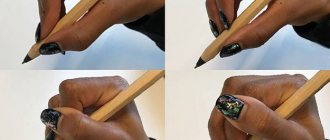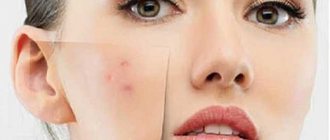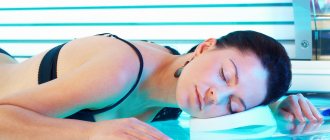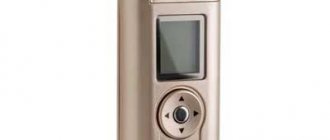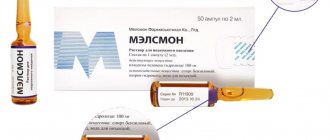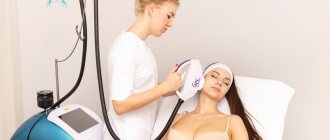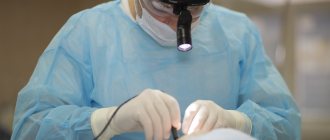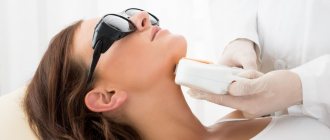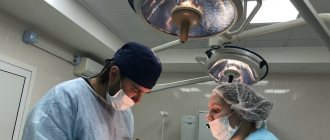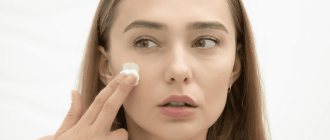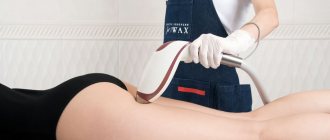The beneficial effects of sunlight on many skin diseases have been known since ancient medicine. However, when it comes to skin irradiation with naturally occurring UV rays, the most important aspect has always been the need to strictly dose the resulting irradiation. Thanks to the invention of artificial sources of ultraviolet rays - special lamps with a specific radiation range, the use of UV in medicine has made a significant step forward. For example, one of the modern achievements of physical therapy is the PUVA therapy technique, which is used, among other things, for the treatment of psoriasis. PUVA therapy is based on a combination of exposure of the skin to ultraviolet rays and special chemicals.
Psoriasis: what kind of disease and how is it dangerous?
Content:
- Psoriasis: what kind of disease and how is it dangerous?
- What is the essence of PUVA therapy?
- Technique for PUVA therapy
- Types of PUVA therapy used to combat psoriasis
- Drugs used during therapy
- Advantages of the PUVA method for treating psoriasis
- Indications and contraindications for therapeutic methods using ultraviolet radiation
- How is treatment carried out?
- Side effects from PUVA treatment, possible complications after therapy
- Factors that help get rid of psoriasis
- Treatment of psoriasis at home using photochemical treatment
Psoriasis is a non-infectious lesion of the skin. The main symptom that characterizes it is specific psoriatic plaques, which gradually replace the area of healthy skin. This disease affects women and men, children, adults, the elderly, and the geography of its prevalence covers almost the entire planet. It is called a disease of the young because approximately 70% of all cases of the disease occur in people aged 15 to 25 years.
The affected person notices the appearance of itchy and flaky areas of skin, which seem to rise above the healthy skin - psoriatic plaques. These plaques, themselves a distinct red color, are covered with a white coating, similar to a thin layer of wax, and may have whitish scales.
The formations can cover the skin throughout the body, but most often occur in places where the skin folds and rubs: on the buttocks, knees, feet, elbows and knees. In addition, the lesion is often localized in the scalp, near the ears, on the hands and around the nails, in the area of the external genitalia.
The area of the plaque can be small - the size of a match head, or spread over the entire surface of a part of the body. Lesions are rarely single, and if a psoriatic plaque is found anywhere on the body, most likely it did not appear alone. In addition to its characteristic appearance, the development of the plaque is accompanied by severe itching and flaking. When combing, scales are separated from its surface. Sometimes a crack or suppuration may appear at the site of the lesion, for example, as a result of mechanical scratching. Violation of the integrity of the skin at the site of the plaque is accompanied by pain.
Doctors consider the Koebner phenomenon to be a separate type of psoriasis, in which skin lesions are provoked by mechanical damage, for example, ordinary scratches. The syndrome is also characterized by a significant deterioration in the condition of the nails.
The most common are the two forms of psoriasis:
- summer, when the disease manifests itself due to sunlight, and exacerbations occur precisely in the summer season;
- winter, when the skin reacts to sharp cold with the development of psoriatic lesions.
One of the dangers of psoriasis is that medicine still does not reliably know the causes of its occurrence. Among the possible factors provoking the development of the disease are:
- genetic reasons;
- autoimmune disorders;
- neurological pathologies;
- metabolic disorders.
In fact, psoriasis does not cause any significant danger to the health or life of the affected person, but it creates many problems for a person, ranging from unpleasant and painful sensations to serious psychological complexes and problems in communication with the outside world.
Indications
PUVA therapy is used for different forms of psoriasis:
- simple or plaque-like;
- drop-shaped;
- spotted
- pustular or exudative;
- follicular;
- seborrheic;
- erythrodermic;
- arthropathic;
- palmoplantar;
- nail;
- scalp.
The technique is also used in cases of low effectiveness of other methods, for example, after ineffective use of corticosteroid drugs. Acceptable at any stage of psoriasis, including progressive.
What is the essence of PUVA therapy?
The treatment method through PUVA therapy is the use of a special photoactive substance that is used externally or taken orally. In parallel, controlled irradiation of the skin with long-wave ultraviolet radiation occurs. In addition to complex cases of psoriasis, PUVA is prescribed to combat the following diseases:
- atopic dermatitis;
- mycosis fungoides;
- vitiligo.
The scientific study of the properties of ultraviolet radiation for human skin first began at the end of the 19th century by the Dane Niels Finsen. Using carbon arc lamps, this scientist pioneered the use of ultraviolet radiation to treat lupus erythematosus. In 1896, the Finsen Institute of Light Therapy was founded in Copenhagen. During the first five years of its existence, about 800 people were treated there, 400 of whom got rid of their ailments.
In 1902, French engineer Gustav Pierre Trouvé began designing a portable device for concentrated ultraviolet radiation to treat skin diseases. Over the next 70 years, UV treatment remained somewhat experimental, and it was not until 1974 that the first source of intense UV radiation was developed, which gave doctors the ability to control the dose of radiation, thereby relieving patients of the negative effects of therapy.
Further, this method of combating skin ailments gradually began to be introduced everywhere. Since 1978, it has been actively used, first in the USA and then in Europe, to treat psoriasis and other skin lesions. Statistics from the global medical community indicate that the method is successful in approximately 80-85% of cases.
Separately, both UV radiation and photosensitizers do not have a significant effect on the skin. Once in the skin cells, the photoactive drug psoralen is activated only when it is exposed to ultraviolet rays of a certain length. In this active state, they interact with the DNA of epidermal cells, resulting in selective inhibition of DNA synthesis in epidermal cells, but the functions of the cells are not suppressed.
An hour and a half after taking the photoactive drug, photochemical binding of DNA occurs due to the absorbed protons of UV radiation. Cyclic bonds are established between the pyrimidine bases of cellular DNA and the photosensitizer.
The general scheme of action of the photosensitizer looks like the process of creating cross-links of the “DNA-psoralen” type, which reduce the synthesis of DNA in epidermal cells, that is, directly affect the causes of the appearance of psoriatic plaques.
Provoking the metabolism of arachidonic acid occurs due to the formation of reactive oxygen species, which damage the membranes of epidermal cells. Psoralen molecules also catalyze chemical reactions that inhibit pathological keratinization and provoke the death of lymphocytes and keratocytes.
Thus, the combination of ultraviolet radiation and photosensitizing substances significantly enhances the effectiveness of ultraviolet radiation to combat skin diseases, including psoriasis.
Phototherapy plays an important role in the treatment of skin diseases. It can be prescribed in combination with medications, as well as as a method of choice or one of the stages of treatment if there is no effect from other therapeutic agents or there are contraindications to their use. In clinical practice, the most widely used phototherapy methods are those based on the use of mid-wave (UVB) and long-wave (UVA) ultraviolet radiation: PUVA therapy, UVB therapy, UVA-1 therapy, ultraviolet excimer light therapy with a wavelength of 308 nm (Table . 1).
Table 1. Phototherapy methods for skin diseases
The mechanisms of action of phototherapy have not been fully elucidated. This type of treatment affects many skin cells (keratinocytes, lymphocytes, melanocytes, dendritic cells, fibroblasts, mast cells), causing various photobiological reactions. The main therapeutic effects of phototherapy are anti-inflammatory, immunosuppressive and antiproliferative, stimulation of melanogenesis, antifibrotic effect (mainly characteristic of PUVA therapy and UVA-1 therapy), reduction in the intensity of itching.
Methodological approaches
Phototherapy methods are prescribed differentially, taking into account their characteristics, indications and contraindications for use, the ratio of the expected benefits of treatment and the risk of side effects. To carry out phototherapeutic procedures, equipment is used that allows the entire skin to be irradiated (Fig. 1),
Rice. 1. Ultraviolet cabin for general skin irradiation. certain areas of the body, for example the scalp, limbs (Fig. 2),
Rice. 2. Ultraviolet devices for irradiation of the lower extremities. or limited lesions (Fig. 3).
Rice. 3. Apparatus for irradiation of limited lesions. In some cases, general irradiation is combined with local irradiation of the skin. It is not recommended to irradiate the mucous membranes, as well as the skin of the genital organs in men.
Phototherapy is prescribed both as monotherapy and in combination with medications. The initial dose of radiation is selected based on the patient’s individual sensitivity to a particular type of radiation, or taking into account its combined use with a photosensitizer. The initial dose is assessed by phototesting to determine the minimum erythemal dose or the minimum phototoxic dose (for PUVA therapy). Another way to select the initial radiation dose is to determine the skin phototype.
During the treatment process, most patients develop a tan and develop skin adaptation to the effects of ultraviolet light. In this regard, in order to obtain the maximum therapeutic effect, single doses of radiation are gradually increased. Dose increases are carried out in such a way that irradiation does not cause severe erythema. PUVA therapy procedures are carried out 2-3 times a week (less than 4 times a week), UVB therapy, UVA-1 therapy and ultraviolet excimer light treatment are carried out 2-5 times a week. In the treatment of most diseases, the course of phototherapy is 20-40 procedures, in the treatment of vitiligo - 50-100 procedures or more.
To increase the effectiveness of treatment, reduce the number of procedures per course and the risk of side effects, phototherapy is combined with medications (retinoids, glucocorticosteroids, vitamin D analogues, etc.). The use of phototherapy as a maintenance treatment is not currently recommended, but in selected cases (for example, in the absence of long-term remission in patients with mycosis fungoides), such an approach may be justified.
PUVA therapy
PUVA therapy (syn.: photochemotherapy) is based on the combined use of psoralen photosensitizers and skin irradiation with long-wave ultraviolet light with a wavelength of 320-400 nm. Preparations containing methoxalen (8-methoxypsoralen), bergapten (5-methoxypsoralen) or trioxalen (4,5′, 8-trimethylpsoralen) are usually used as photosensitizers, which are produced in the form of tablets/capsules, cream, solution for external use, less commonly other dosage forms.
PUVA therapy is an effective treatment for a number of chronic dermatoses (Table 2).
Table 2. Indications for PUVA therapy Thus, in patients with psoriasis, it allows achieving complete regression of rashes or a significant improvement in the skin process in more than 80% of cases [1, 2].
There are several methods of PUVA therapy, differing from each other in the method of introducing the photosensitizer.
PUVA therapy with oral photosensitizer
. With this method, a photosensitizing drug is administered orally in the form of tablets or capsules 1-3 hours before irradiation. The method is usually used in patients with widespread skin lesions, when irradiation of the whole body is required, but can also be prescribed for the treatment of rashes localized to certain areas of the body (on the scalp, hands, feet).
PUVA therapy with external application of a photosensitizer.
This method involves the external use of a photosensitizing drug in the form of a solution or cream and irradiation of certain areas of the body: scalp, limbs, etc.
PUVA baths
(syn.: balneophotochemotherapy) are one of the relatively new methods of PUVA therapy. The method is based on the combined use of baths with an aqueous solution of the psoralen photosensitizer and irradiation of the skin with long-wave ultraviolet light. The duration of the bath is 15 minutes (water temperature in the bath is 37 °C), the skin is irradiated immediately after the bath. Depending on the prevalence of the rash, general PUVA baths are prescribed, followed by irradiation of the entire skin, or local PUVA baths with irradiation of the hands and feet. In terms of effectiveness, this method is not inferior to other methods of PUVA therapy, but has a number of advantages (Table 3).
Table 3. Advantages of PUVA baths
Since UVA radiation penetrates deeper into the skin than UVB rays, the use of PUVA therapy is considered preferable to UVB therapy in the treatment of palmoplantar dermatoses, as well as lesions with severe skin infiltration . In addition, PUVA therapy is prescribed in cases of lack of effect or short duration of remission of the disease when treated with other methods of phototherapy.
UVB therapy
UVB therapy is based on the use of mid-wave ultraviolet radiation (wave range 280-320 nm). Unlike PUVA therapy, mid-wave ultraviolet irradiation is not combined with the use of photosensitizing drugs, and therefore this type of treatment does not have its inherent systemic side effects and contraindications. UVB therapy is effective for many skin diseases, has a good safety profile and can be prescribed to children, pregnant and nursing mothers (Table 4).
Table 4. Indications for UVB therapy
The most well-known methods of UVB therapy are narrow-band phototherapy with a wavelength of 311 nm and broadband mid-wave ultraviolet therapy.
Narrowband mid-wave ultraviolet therapy with a wavelength of 311 nm (narrowband phototherapy 311 nm). In 1981, J. Parrish and K. Jaenicke [4], using a monochromator when irradiating psoriasis lesions, showed that in the wavelength range 254–313 nm, radiation with a wavelength of 296–313 nm had the highest efficiency (the maximum efficiency was observed when irradiating wavelength 313 nm). Subsequently, based on these data, lamps were created that generate radiation in a similar narrow band of the ultraviolet spectrum with an emission maximum at a wavelength of 311 nm, and therefore the method was called “narrow-band phototherapy 311 nm.”
Currently, narrowband phototherapy is the most common method of phototherapy for skin diseases. It is less effective than PUVA therapy, but has a better safety profile. In patients with vitiligo, narrow-band UVB therapy, in contrast to PUVA therapy, allows for more uniform and cosmetically satisfactory skin repigmentation. The advantages of the method are high efficiency and good tolerability of treatment by both adults and children.
Broadband mid-wave ultraviolet therapy is based on irradiating the skin with ultraviolet light with a wavelength of 280-320 nm. This method is less effective than narrowband 311 nm phototherapy, and therefore it has been used much less frequently in recent years.
UVA-1 therapy
Far-long-wave ultraviolet radiation therapy (UVA-1 therapy, wavelength 340-400 nm) was proposed for clinical practice in the early 90s of the last century. Unlike other ultraviolet ranges, UVA-1 radiation is able to penetrate more deeply into the skin and reach subcutaneous fat, and therefore more effectively affect the structural components of the dermis and hypodermis. Indications for UVA-1 therapy are presented in table. 5.
Table 5. Indications for UVA-1 therapy This method has proven itself especially well in the treatment of localized scleroderma and other scleroderma-like skin diseases.
Unlike PUVA, UVA-1 therapy does not require the use of photosensitizers and is associated with fewer side effects. In particular, it rarely causes erythema (burns) and is well tolerated by patients [5]. The disadvantages of the method include the long duration of the procedures, which can range from 18 to 40 minutes or more.
Ultraviolet excimer light therapy with a wavelength of 308 nm
In recent decades, equipment has been created that makes it possible to treat individual lesions with the selection of the optimal radiation dose. This method, called “focal (targeted) phototherapy,” allows you to eliminate the impact of ultraviolet light on the surrounding healthy skin and thereby avoid its negative impact on areas of the body that are free from rashes. In addition, the advantage of the method is the possibility of treating lesions located in hard-to-reach areas of the body: on the scalp, ears, armpits, inguinal folds, interdigital spaces, perianal area.
The most popular devices are those that generate ultraviolet excimer light with a wavelength of 308 nm. In clinical practice, both laser and lamp sources of ultraviolet excimer radiation are used. Several studies have shown comparable effectiveness of their use, but the cost of lamp excimer devices is significantly lower than the cost of excimer lasers.
The main indications for treatment with ultraviolet excimer light are limited forms of psoriasis, vitiligo, atopic dermatitis, alopecia areata, lichen planus, and eczema [6, 7]. Since the sensitivity to ultraviolet radiation of different areas of the body is not the same, the dosage of irradiation is carried out taking into account not only the individual photosensitivity of the patient, but also the localization of the rash. When choosing a single dose of radiation, the degree of skin infiltration in the lesions is also taken into account.
Side effects
Side effects of phototherapy are divided into early and late.
Early side effects.
The main side effects observed during a course of phototherapy are erythema and itching of the skin, which disappear after reducing the radiation dose or temporarily canceling the procedures [8, 9]. With oral use of photosensitizers, in some situations, discomfort in the epigastric region, nausea, and, less commonly, dizziness or headache may occur. A number of other side effects of phototherapy have been described (dry skin, hyperpigmentation, acne-like rashes, etc.), but they develop much less frequently. In most cases, as a result of irradiation, a tan forms on the skin of patients, which disappears within 2-3 months after the end of treatment.
Long-term side effects.
With multiple repetitions of phototherapy courses, patients may experience some long-term side effects. Regardless of the range of radiation used, multi-course phototherapy can lead to the occurrence of lentigines and keratosis, as well as the development of premature skin aging (photoaging), manifested by wrinkling, atrophy and impaired pigmentation of the skin, a decrease in its elasticity, the appearance of telangiectasia and other characteristic symptoms.
In patients with psoriasis, an association of long-term multi-course PUVA therapy with an increased risk of developing squamous cell skin cancer and, to a lesser extent, basal cell skin cancer has been established [10]. The risk of skin tumors increases as the total number of procedures and total radiation dose increases, when combining PUVA therapy with UVB therapy, treatment with cyclosporine, ionizing radiation or arsenic, and irradiation of the genital organs in men. American colleagues identified an increased incidence of skin melanoma with long-term PUVA therapy [11], but studies by other authors did not find such an association.
In contrast to PUVA therapy, convincing evidence of a carcinogenic effect on patients with UVB therapy, UVA-1 therapy and treatment with ultraviolet excimer light with a wavelength of 308 nm has not yet been obtained.
To reduce the risk of carcinogenic effects, PUVA therapy must be carried out taking into account the individual characteristics of the patient and the presence/absence of cocarcinogenic factors, which include skin phototypes I and II, smoking, long-term therapy with immunosuppressive drugs (especially cyclosporine), previous treatment with arsenic or ionizing radiation and etc. It is not recommended to carry out more than 1-2 courses of treatment per year, or to irradiate the genitals of men. The face, ears, breast nipples, as well as areas exposed to frequent sun exposure (neck, back of the hands), if there are no lesions on them, must be protected during procedures with clothing or photoprotective agents. If possible, patients should not be prescribed more than 200 PUVA therapy procedures during their lifetime, and the cumulative UVA dose for all courses should not exceed 1000-1500 J/cm2. Patients who have received a large number of procedures should subsequently be examined annually by a dermatologist/oncologist for early detection of skin cancer.
There is evidence in the literature about the ability of psoralen photosensitizers to penetrate through the bloodstream into the lens of the eye, where they can be detected 12 hours after oral administration of the drug. It is believed that the accumulation of a photosensitizer in the lens may increase the risk of developing cataracts, however, with proper treatment with mandatory eye protection with glasses with ultraviolet filters (during procedures and within 24 hours after their completion), this effect is not observed [12].
Contraindications
There are absolute and relative contraindications to phototherapy.
Absolute contraindications include intolerance to ultraviolet radiation or psoralen photosensitizers, diseases in which there is increased sensitivity to light, DNA repair disorders and a high risk of developing skin tumors (systemic lupus erythematosus, dermatomyositis, albinism, xeroderma pigmentosum, Gorlin-Goltz, Bloom, Cockayne syndromes , Rothmund-Thomson syndrome, trichothiodystrophy, porphyrias), melanoma, history of squamous or basal cell skin cancer or at the time of treatment, dysplastic melanocytic nevi, pregnancy and breastfeeding (PUVA therapy is contraindicated).
Relative contraindications include a history of severe damage to the skin from sunlight or ultraviolet radiation, as well as exacerbation of the disease during insolation, concomitant therapy with cyclosporine, precancerous skin diseases, the use of other photosensitizing drugs and agents, childhood (PUVA therapy is contraindicated), pemphigus, bullous pemphigoid, cataract or absence of lens (PUVA therapy is contraindicated), previous treatment with arsenic or ionizing radiation, severe liver and kidney dysfunction (PUVA therapy is contraindicated), claustrophobia, conditions and diseases for which physical therapy is contraindicated.
It should be noted that phototherapy should be used within reasonable limits for children. PUVA therapy is contraindicated in patients under 18 years of age and can be prescribed only in selected cases. There is no convincing evidence of the safety of long-term use in childhood of UVB therapy, UVA-1 therapy and treatment with ultraviolet excimer light in the literature, and therefore these methods should be prescribed to children with a mandatory assessment of the ratio of expected benefits and the risk of side effects, mainly in severe cases. forms of dermatoses, torpid course of the disease or lack of effect from other therapeutic agents. It is not recommended to perform phototherapy on children under 7 years of age, since at this age the child, as a rule, is not able to independently stand in the phototherapy cabin.
Information about authors
V.A. Volnukhin - Doctor of Medical Sciences, Professor, Chief Researcher of the Laboratory of Fundamental Research Methods of the Moscow Scientific and Practical Center of Dermatovenereology and Cosmetology of the Moscow Department of Health. https://orcid.org/0000-0002-8363-5188
Corresponding author:
Volnukhin Vladimir Anatolyevich - Moscow State Budgetary Institution of Health "Moscow Scientific and Practical Center of Dermatovenereology and Cosmetology" of the Moscow Department of Health, Moscow, Russia. e-mail
Technique for PUVA therapy
Carrying out procedures of this nature became possible only thanks to the invention of devices that produce directed UV radiation of a certain length. Special booths or screens have built-in fluorescent lamps, which are the source of UV waves in the range from 320 to 400 nm. The effectiveness of the procedure can be maximum in the wave range of 350-365 nm.
PUVA devices are available in various modifications - the patient can stand or lie during the process, or receive a dose of exposure only to a specific part of the body, for example, the head, feet, knees or elbows.
Devices for whole body irradiation are generally installed only in appropriate medical institutions, while portable devices designed for local exposure can be used even at home.
Drugs used during therapy
All photosensitizers that are used in PUVA therapy can be divided into two main groups:
- having natural origin;
- synthetically produced substances.
The first group includes those drugs that are extracted from natural substances - umbrella plants, citrus fruits and legumes, for example, Ammifurin, Methoxalen, or 8-methoxypsoralen. This active element is contained in the grains of the “amni major” plant. Absorption of the substance occurs in the upper parts of the digestive tract, excretion occurs mainly through the kidneys.
The group of synthetic drugs includes Trimethylpsoralen, which, however, is more often used to treat vitiligo.
Contraindications
The PUVA procedure has a strict list of contraindications that limit the possibility of using this method regardless of the purpose. This list includes the following pathologies:
- blood diseases;
- tumor formations of any location and etiology;
- diabetes;
- ophthalmological pathologies (especially aphakia, absence of a lens in the eye);
- severe liver and kidney diseases;
- increased photosensitivity (albinism, systemic lupus erythematosus, xeroderma pigmentosa, etc.).
PUVA therapy is contraindicated in systemic lupus erythematosus
It is unacceptable to carry out PUVA therapy for women during lactation and pregnancy. If the patient could theoretically be pregnant, it is first necessary to exclude this possibility, and only then begin treatment. In childhood (in patients under 12 years of age), the possibility of using photochemotherapy is determined individually, taking into account all risk factors.
Advantages of the PUVA method for treating psoriasis
Just half a century ago, for a patient with psoriasis, not only was it not possible to identify the causes of the disease (which, however, has remained virtually unchanged today), but there was also no adequate and effective method to rid him of the plaques that constantly cause discomfort.
With the invention of the PUVA therapy method, the treatment of psoriasis has made it possible to improve the patient's condition in more than 80% of cases. At the same time, the first visual signs of improvement in skin condition appear after 4-5 procedures. The duration of the achieved remission can last from six months to several years.
PUVA therapy for psoriasis has a small list of contraindications and is quite well tolerated by most patients.
Treatment takes place in an outpatient clinic, in a clinic, so it can be carried out without interruption from study or work.
The therapy is not addictive, and after its completion the affected person does not develop withdrawal symptoms.
The cosmetological and aesthetic effect is the appearance of a light, even tan in the patient.
Benefits of PUVA
Therapy using the PUVA technique shows high positive dynamics and has a number of advantages:
- rapid achievement of effect - after two or three procedures, the condition of the affected skin improves significantly;
- comfortable conditions for therapy without interruption from work and personal affairs;
- lack of addiction and prolonged effect;
- the ability to conduct maintenance and preventive sessions without the risk of complications;
- high level of treatment tolerance;
- the possibility of using additional treatment methods;
- long period of remission.
All patients after the course show a significant improvement in the condition of the skin, and in about 80% of people the surface of the epidermis is completely cleansed.
Indications and contraindications for therapeutic methods using ultraviolet radiation
Indications for prescribing a course of procedures are diagnosed psoriasis in any form. Does this mean that the treatment method is suitable for all patients affected by this disease?
Like any therapeutic procedure, PUVA therapy has a number of contraindications. It is prohibited to administer UV irradiation to patients with the following pathologies:
- hypersensitivity to methoxsalen;
- diseases associated with increased sensitivity to light, for example, lupus erythematosus;
- melanoma;
- severe heart disease.
Pregnant women are also prohibited from undergoing the procedure.
For patients with fair skin, those who have previously been exposed to ionizing radiation, patients with weak immunity, renal failure, cancer and cataracts, PUVA therapy is prescribed in extreme cases, with great caution.
Devices for professional PDT
Special lighting equipment for medical and cosmetology purposes for PDT using a drug based on chlorin E6 (a product of chlorophyll extraction).
| Revixan Duo Light professional device for photodynamic therapy Light: red 661 ± 2nm, blue 401 ± 2nm, Power density: up to 200 mW/cm2, LEDs: 600 pcs. |
| Device for treating nail fungus and other targeted problems using PDT Light: red 661 ± 2nm, Power density: up to 200 mW/cm2, LEDs: 1 pc. |
| Revixan Mini Light mini device for photodynamic therapy Light: red 661 ± 2nm, blue 401 ± 2nm, Power density: up to 50 mW/cm2, LEDs: 180 pcs. |
| Visor Light Prof LED photodynamic mask Light: red 661 ± 2nm, blue 401 ± 2nm, Power density: up to 30 mW/cm2, LEDs: 384 pcs. |
Complete catalog of equipment for photodynamic therapy
How is treatment carried out?
The treatment process does not require hospitalization of the patient, so procedures are carried out in clinics, hospitals, private and specialized medical institutions.
When systemic therapy is indicated, the patient takes tablets of a photosensitizing substance with low-fat food or milk. After some time, he is placed in a special apparatus, standing or lying down, where he is exposed to UV irradiation. The first procedure usually lasts several minutes, and the time of subsequent ones gradually increases.
The radiation dosage is calculated taking into account the skin type. To check the required dose of UV waves, doctors conduct the following experiment: several small areas of the skin are irradiated, gradually increasing the duration on each. After two or three days, the doctor evaluates the skin reaction and prescribes a dose for the treatment of psoriasis that is half less than the one that caused the slightest redness.
After the procedure, the patient must wear sunglasses for the next 24 hours to prevent the development of cataracts.
Typically, a course of systemic therapy lasts 10-30 procedures, depending on the initial condition of the person. The procedures are carried out at intervals of 1 day.
Exit from therapy occurs gradually - the patient gradually reduces the dosage of photosensitizers each time.
PUVA baths are a more modern method of photochemotherapy. Psoralen is dissolved in water, and the patient is immersed in the resulting liquid for a while, after which he is exposed to ultraviolet light, usually for about 15 minutes. This method of treatment is offered to patients in whom internal administration of psoralens causes severe side effects, as well as to patients under 15 years of age.
PUVA therapy baths are especially effective for treating psoriasis of the feet and hands. Thanks to this method of photochemotherapy, it is possible to reduce the course dose of radiation and minimize the likelihood of side effects.
The course of bath treatment is 15-20 procedures; in advanced cases, the doctor will recommend 30-40 sessions.
Local procedures are also carried out with the patient being prescribed special ointments containing psoralens. Before being exposed to radiation, the patient applies the substance to the skin.
Types of treatment used
In physiotherapeutic practice, three PUVA treatment protocols are used:
- systemic technique - to influence the patient’s entire body;
- local – for therapy of individual zones;
- combined – a combination of the first two methods.
Photosensitizing drugs are available in different forms - tablets, emulsion, cream, solution. They are used for both internal and external treatment.
One effective way is bath therapy. 50 mg of psoralen is dissolved in water, the patient is immersed for 15 minutes, after which he undergoes a UV irradiation session. Such baths give good results both with a systemic and local approach.
Recommended irradiation parameters (per dose per cm2):
- low threshold: 10 – 20 J;
- medium – 50 – 60 J;
- high – up to 120 J.
To obtain the effect, a therapeutic course of 10–15 procedures is carried out with the selected dose. Then, preventive sessions are recommended twice a year.
Side effects from PUVA treatment, possible complications after therapy
Despite its high effectiveness and painlessness for the patient, PUVA therapy cannot be considered absolutely safe.
For example, taking photosensitizers in the form of tablets may be accompanied by some unpleasant sensations:
- nausea;
- skin itching and allergic manifestations on the skin;
- painful syndrome in the epigastric region;
- loss of appetite;
- dizziness;
- sleep disturbance;
- general depressed state;
- decrease in blood pressure.
Typically, such symptoms appear after the first few doses of the drug and disappear over time.
To make their manifestations less severe, the attending physician may recommend switching to split meals, taking the drug in portions, along with food, for example, with cereals or baked goods. The doctor may also prescribe antiemetic medications.
External use of psoralens can also cause discomfort:
- dryness and itching of the skin;
- allergic and contact dermatitis;
- erythema and burning.
To eliminate or soften them, the doctor may recommend the use of medicinal ointments and creams, as well as bath products with peat oxidate.
Carrying out courses of PUVA treatment in some cases can cause complications and certain diseases, for example, keratitis, erythema, burning, premature aging of the skin, cataracts, burns, conjunctivitis, basal skin cancer, melanoma, squamous cell carcinoma. Repeated or too frequent courses of therapy especially increase the likelihood of their development.
Patients who undergo periodic PUVA treatments are advised to visit an ophthalmologist annually for an eye exam.
Procedure
As a rule, no preparation is required before the procedure, but in order to avoid side effects, one of which is hyperpigmentation, patients are advised to avoid visiting the solarium and staying outside during hours of maximum sun activity at least 2-3 weeks before treatment. .
Before undergoing treatment, you should limit your exposure to the sun.
Systemic therapy
This is one of the most effective, but at the same time the most difficult PUVA methods. Its essence lies in the oral administration of dermatotropic drugs containing psoralen (“Methoxalen”, “Oxoralen”). These drugs have a photosensitizing effect, that is, they enhance the ability of the biological components of the epidermis to absorb light energy flow. The mechanism of action is based on interaction with the DNA of epidermal cells, reducing the rate of their proliferation and stimulating the processes of melanogenesis (production of melanin, which is responsible for regulating melanin metabolism).
Taking tablets with psoralen is indicated for severe forms of psoriasis, mycosis, vitiligo, and lichen planus. Psoralen has high bioavailability and quickly binds to the plasma protein membrane, reaching its maximum concentration within 1-3 hours: this is exactly the interval that must be maintained between taking the drug and irradiation.
Capsules "Oxoralen"
Features of systemic PUVA therapy:
- Duration of the procedure is about 45-60 minutes;
- the required length of the light flux is 320-400 nm;
- absence of painful sensations during operation of the device (the patient may feel strong warmth at the site of exposure);
- the interval between taking the medicine and ultraviolet irradiation should be 2-3 hours;
- Only areas with affected tissue are treated.
Irradiation takes place in a special booth, along the perimeter of which ultraviolet lamps of a given range and frequency are installed. The patient must wear protective glasses over his eyes to prevent thermal damage to the cornea. After the procedure is completed, the patient can immediately go home, since the PUVA method does not require recovery or rehabilitation.
Cabin for the procedure
Fragment therapy
Fragmented (local) treatment is carried out according to the same principles as systemic PUVA therapy. The difference lies in the dosage form of the psoralens used and the method of their administration. With this method of exposure, the drug is applied to damaged skin areas in the form of a concentrated solution, after which the skin is treated with ultraviolet light.
This method is also quite effective for treating visible manifestations of neurodermatitis, vitiligo and other inflammatory skin diseases. Psoriatic plaques in patients with psoriasis smooth out and become lighter after 4-6 procedures.
The fragmentary method allows you to act only on the affected areas of the skin
Note! With any PUVA therapy method, the full course of treatment consists of approximately 15-25 procedures, which must be performed 3-4 times a week. If the main localization of psoriasis plaques is the feet and palms, the number of procedures can be increased to 30 per course.
Medical baths with psoralen
PUVA baths (some call them surfactant baths) are a fairly young method of phototherapy, which has already established itself as one of the most effective methods of treating psoriasis, especially the palmoplantar form. The essence of the method lies in its name: the patient is immersed (entirely or individual parts of the body) in a bath to which a psoralen solution is added (most often “Ammifurin 0.3%”). The duration of such a bath is about 20 minutes.
After the bath, the patient also undergoes dosed ultraviolet irradiation. The sensations during the procedure are the same as when using other PUVA methods: a feeling of warmth at the site of treatment, possibly a slight tingling sensation.
Before irradiation, the patient is prescribed a therapeutic bath with ammifurin
Note! After a PUVA bath, you need to take a warm shower and apply a special moisturizer to your body (prevention of skin photoaging). After the procedure, you should avoid contact with direct sunlight for 24 hours and visit a solarium or bathhouse.
Factors that help get rid of psoriasis
Treatment of this disease should be comprehensive, since the development of the disease itself is determined by a combination of a whole range of factors. So, in addition to the use of PUVA therapy and drug treatment, doctors recommend introducing some restrictions into the daily diet - removing seafood, honey, citrus fruits, chicken meat, as well as vegetables, berries and fruits that are red in color. It is better to limit the consumption of canned food, fast food and semi-finished products, as well as any “synthetic” food, as it contains a large number of harmful food additives.
When choosing clothes, it is recommended to give preference to cotton or linen fabrics, but not synthetics, which are irritating to the skin. It is also better to avoid things made from natural animal wool, as well as fur products.
Best materials of the month
- Coronaviruses: SARS-CoV-2 (COVID-19)
- Antibiotics for the prevention and treatment of COVID-19: how effective are they?
- The most common "office" diseases
- Does vodka kill coronavirus?
- How to stay alive on our roads?
For washing, you should choose products containing alkali, for example, special soap. When washing, clothes should be rinsed well in plenty of water.
It is better to choose bedding with hypoallergenic fillings that do not contain fluff, wool or feathers. Blankets, pillows and mattresses must be ventilated periodically.
When choosing furniture, you need to pay attention to the one that is made of natural materials and does not emit toxic fumes of formaldehyde. All places and objects with abundant accumulation of dust - carpets, rugs, curtains, open shelves with various objects and books - must either be constantly wiped of dust or get rid of them. You need to be extremely careful when purchasing indoor plants or pets.
Of course, the main rule for a patient with psoriasis is cleanliness around. In a living room, it is necessary to periodically do wet cleaning, ventilate, and also ensure that the air is not too dry or too humid.
How to reduce the likelihood of nausea after the procedure
Nausea is a very strong and unpleasant side effect of PUVA, which can be avoided (or its symptoms significantly reduced) if you follow simple recommendations from specialists.
- Psoralen should not be taken on an empty stomach. It is best to take drugs from this group simultaneously with cereal products or milk.
- If the nausea after the procedure is too severe, the session must be rescheduled for the second half of the day.
- Dividing the dose into two doses with an interval of 30 minutes helps.
- The use of domperidone-based prokinetics (Motilak, Motilium) is acceptable.
Motilium will help cope with nausea
In cases of severely controlled nausea, a reduction in the dose of psoralen and an increase in the dosage of UVA is indicated.
PUVA therapy is an effective, safe (when used correctly) and patient-friendly method for treating inflammatory skin pathologies. It is impossible to completely get rid of rashes using this method, but a full course significantly reduces the external manifestations of the disease and, with properly selected complex treatment, prolongs the period of remission, increasing the patient’s quality of life.
Treatment of psoriasis at home using photochemical treatment
PUVA therapy is not only available in medical settings. Today, there are small portable devices that make it possible to conduct UV irradiation courses at home. This method is usually used to treat locally located psoriatic plaques, for example on the upper or lower extremities. It should be noted that the very fact that the procedure can be performed at home does not mean that the patient in this case can self-medicate. All questions regarding the duration and frequency of the course, determining the dose of the drug and radiation, and the specifics of the procedure are decided by the attending physician, and only by his prescription can PUVA therapy be performed at home.
Reviews from psoriasis patients who have discovered PUVA therapy are mostly positive. Most affected patients note the high effectiveness of photochemotherapy procedures. Indeed, treatment with a combination of photosensitizers and exposure to ultraviolet radiation makes it possible to achieve long-term deep remission of the disease in just one course. The percentage of side effects and harmful consequences from photoradiation is quite small - no more than 20 people out of 100 report their occurrence. Doctors also speak positively about the procedure - if you do not abuse the prescription of courses and the dosage of UV radiation, and also follow all preventive measures and safety rules, the therapy shows high effectiveness even in children and the elderly, especially in the fight against psoriasis of the upper and lower extremities.
More fresh and relevant information about health on our Telegram channel. Subscribe: https://t.me/foodandhealthru
We will be grateful if you use the buttons:
An innovative photodynamic therapy system with proven effectiveness
A specialized complex for photodynamic therapy from one of the scientific and technological industry leaders - the Revixan company - is a powerful tool in the hands of a professional. The technology of photodynamic therapy, which comes from fundamental medicine, is fully adapted for its use in dermatology and cosmetology.
An innovative PDT system from the only company on the market that:
- has been engaged in photodynamic therapy as the main and only type of activity for more than 15 years,
- is a manufacturer of equipment and drugs,
- has patents for its developments,
- has the widest range of devices for photodynamic therapy.
Activities are being carried out to support doctors in clinics, salons and private cosmetologists.
There is an opportunity to get acquainted with the technology of photodynamic therapy, attend training events, and communicate with practicing specialists. If you make a positive decision, you will be delivered equipment, a set of medications, given an introductory briefing, and you can immediately start working.
The widest range of solutions for working with or through the skin: cosmetology, dermatology, therapy, plastic surgery, immunology.
Prospects for the development of the photodynamic therapy market
Effective and at the same time gentle work at the cellular level is attracting increasing attention from dermatologists, cosmetologists and doctors of other specialties.
Successful application experience, proven effectiveness, a wide range of possibilities, selectivity of exposure, as well as the virtual absence of uncontrollable and side effects give doctors the confidence to call the PDT method very promising and believe that it is the future.
